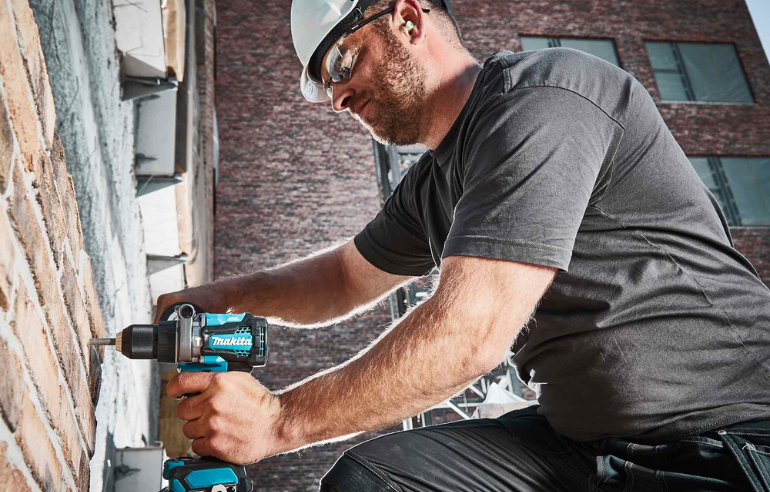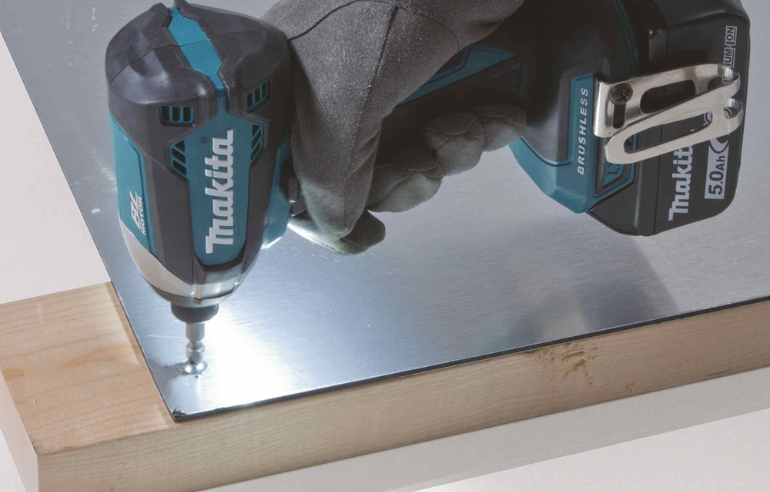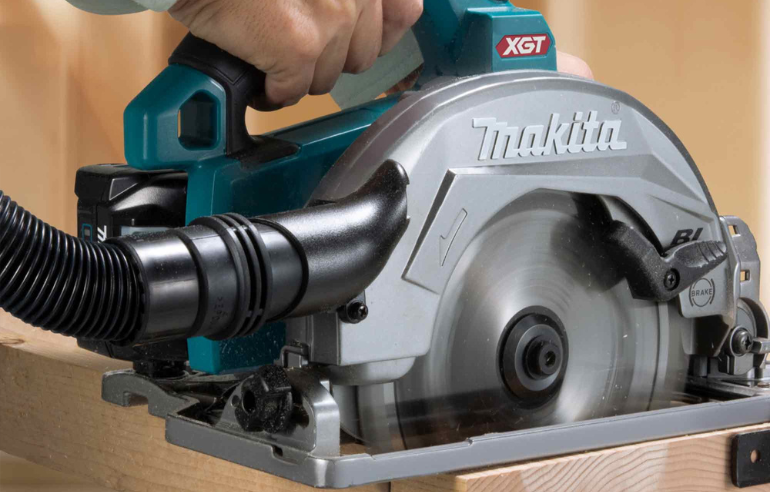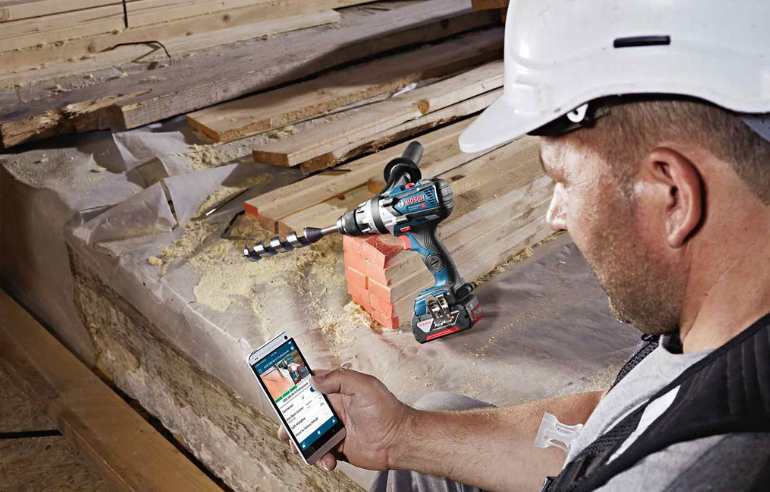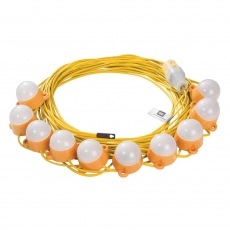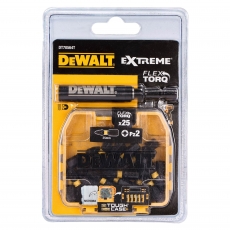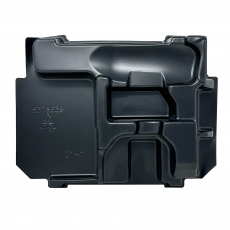Makita vs Bosch Power Tools

Here at ToolStore UK, we often get ask which tool brand is the “best”. There isn’t an easy answer to that question, which is why we’ve previously compared key DeWalt tools with machines from Makita and Bosch power tools. In our latest blog, we’re going to see how those Makita and Bosch tools compare against each other.
Both Makita and Bosch are trusted by professionals and hobbyists around the world because their tools combine power and reliability. But does one brand have an advantage over the other? Let’s find out.
About the brands
Makita entered the UK power tool market in 1972; we were one of the first tool retailers to work with them and the partnership between our businesses is still strong more than 50 years later. The Japanese company was established in 1915 and developed the first portable electric planers sold in Japan in 1958. Makita has been making power tools ever since.
Bosch have been manufacturing power tools since 1932, initially making grinders, drills, and screwdrivers. The roots of the company go back even further; the business was established in Stuttgart in 1886. Over the last 90 years, Bosch has been a world leading power tool brand, launching the first ever cordless tools – a drill and a hedge trimmer – in 1969.
Range and Power
Browse our range of cordless power tools and you’ll see hundreds of options from both Makita and Bosch – the two brands are known worldwide for excellence and durability. This means that, no matter what kind of tool you need, Makita and Bosch will usually have several models to choose from.
Bosch is a global leader in power tools, but Makita has challenged the German giant by developing a range of power tools which runs at a higher voltage than the standard 18v. The new 40v Max XGT range is a new standalone cordless system engineered for higher-demand applications. Combining higher battery output, built-in smart technology and innovative tool design, the XGT range will stand side-by-side with Makita’s industry-leading LXT system. There are two Makita XGT batteries, a 40v Max 2.5 ah (BL4025) and a 40V Max 4 ah (BL4040), both built with 10 Lithium-ion cells and LED fuel gauges with 4 indicator positions. However, as a standalone range, the 40v Max batteries won’t work with 18v tools purchased previously, which is something to bear in mind.
Bosch is developing a range of 36v power tools accompanied by a range of multi-voltage batteries. The first Bosch Professional 36v tool to reach us is the GBH36VFLI-Plus 36v SDS Plus Hammer Drill with Quick Change Chuck and 2x6ah Batteries; expect further 36v tools to be launched in the future.
Reliability and Warranties
Part of the reason Makita and Bosch are market-leading brands is the quality of their products. No matter which brand you back, you’ll be investing in tools which have been built to last.
However, from time to time, things do go wrong, either during the manufacturing process or when the tool is in use. So, it is worth thinking about the warranty policy operated by each company.
Most Makita tools can benefit from an extended warranty of three years when registered on MyMakita within 30 days of purchase. They offer a one-year warranty as standard.
Bosch are equally confident in the quality of their products. Register a power tool or measuring tool on the Bosch Pro 360 portal within four weeks of purchase and they will extend their standard guarantee from one to three years.
READ NEXT: How To Plaster A Wall - Step By Step Guide
![Makita V Bosch Power Tools]()
OK; how do the products compare?
When choosing power tools, there are various things to think about. High performance is obviously important, but you might also want to think about the tool’s overall size and weight, whether it is supplied with a battery and if it is supplied with accessories.
You may also need to think about whether you can get the tool you want for the price you’re looking to pay. At ToolStore UK, we understand that power tools are a big financial commitment and constantly check our prices to ensure we offer the best price we possibly can, on every product we sell.
In this section, we’ll look at how cordless Makita and Bosch products of various types measure up against each other, including:
In the interests of balance and fairness, the products featured below have featured in our other brand comparison blogs, which you can read by clicking on these links:
Cordless Impact Drivers
For this test, we’re going to compare the Makita DTD153RTJ 18v LXT Brushless Impact Driver with 2 x 5 ah Batteries and the Bosch GDX18V-200 18v Brushless Impact Driver/Wrench with 2x5ah Batteries. The key specifications of these two tools are as follows:
Makita DTD153RTJ Bosch GDX18V-200 Max Torque: 170 Nm 200 Nm No Load Speed: 0 - 3400 rpm 0 - 3400 rpm Impacts per Minute: 0 - 3600 ipm 0 - 4200 ipm Bit Holder: 6.35mm (1/4") 6.35mm (1/4") Weight: 1.5 kg 1.2 kg Hand/Arm Vibration - Impact: 13 m/s² 11.2 m/s² Sound Power: 107 dB(A) 109.5 dB(A) The Bosch impact driver is slightly noisier but has a maximum torque 30 Nm (17%) greater than the DTD153RTJ Makita Impact Driver. In addition, the Bosch GDX18v-200 offers a greater impact rate, which will help trade professionals work efficiently. The Bosch tool is lighter and has a significantly lower rate of vibration too, both of which could make a significant difference to user comfort if working with the tool all day.
READ MORE: Where Can I Donate Power Tools?
![Bosch vs Makita]()
Cordless Combi Drills
Makita has brought the new 40v Max XGT technology to the combi drill market in the form of the Makita HP001GD202 40v Max XGT Brushless Combi Drill with 2x2.5ah Batteries. A leading alternative is the Bosch GSB18V-110C 18v Brushless Combi Drill with 2x5ah Batteries + L-Boxx.
The key specifications of these two tools are as follows:
Makita HP001GD202 Bosch GSB18V-110C Max Torque: 140 Nm 110 Nm No Load Speed: 0 - 3400 rpm 0 - 2100 rpm Impacts per Minute: 0 - 39000 ipm 0 - 31500 ipm Capacity in Masonry: 20 mm 16 mm Capacity in Metal: 20 mm 13 mm Capacity in Wood: 76 mm 82 mm Batteries Supplied 2 x 2.5 ah 40v Max 2 x 5 ah In terms of raw power, the Makita HP001GD202 has a clear advantage because it runs at 40v compared to 18v. This is reflected in significant increases in the maximum torque, the speed at which it can operate compared to the Bosch GSB18V-110C and the impact rate, which is a huge 24% higher than the Bosch tool. The Makita drill can also drill to greater depths in Masonry and Metal, but the Bosch machine’s capacity in wood is greater. In addition, the GSB18V-110C is supplied with 5 ah batteries, which will run for longer between charges than the 2.5 ah batteries which come with the Makita drill.
Cordless Circular Saws
In the circular saw market, the Makita HS004GD203 40v Max XGT Brushless 190mm Circular Saw with 2x2.5ah Batteries takes a step forward in terms of power, while the Bosch GKS18V-68C 18v Brushless Circular Saw with 1x5.5ah Battery + LBoxx works with Bosch’s existing 18v batteries. Both machines are fitted with 190mm diameter blades and supplied with a charger.
The key specifications of these two tools are as follows:
Makita HS004GD203 Bosch GKS18V-68C Voltage 40v 18v Maximum Cut at 0º°: 60 mm N/A Maximum Cut at 45º°: 0 - 3600 ipm 0 - 4200 ipm Maximum Cut at 90º°: 6.35mm (1/4") 6.35mm (1/4") Batteries Supplied 2 x 2.5 ah 40v Max 1 5x5 ah Despite running at a significantly higher voltage, the Makita tool does not perform as well in certain ways as the Bosch GKS18V-68C, which offers greater cutting depths and is supplied with a single battery capable of running for longer than both the 2.5 ah batteries supplied with the HS004GD203. A further advantage enjoyed by the Bosch tool is that it is compatible with all Bosch Professional 18v batteries, where the Makita XGT tool will not work with 18v LXT batteries.
![bosch vs makita circular saw]()
Cordless Mitre Saws
As they have with circular saws, Makita has developed 40v cordless mitre saws which move beyond 18v power and utilise new battery technology. The Makita LS002GD202 40v XGT 216mm Mitre Saw with 2x2.5ah Batteries is their next generation mitre saw. The only Bosch product in our range which can be compared with it is the Bosch GCM18V-216 18v Brushless 216mm Mitre Saw (Body Only).
The key specifications of these two tools are as follows:
Makita LS002GD202 Bosch GCM18V-216 Voltage: 40v 18v Blade Diameter: 216 mm 216 mm Bore: 30 mm 30 mm No Load Speed: 4800 rpm 4600 rpm Bevel Capacity: 48° 45° Maximum Mitre Range: 60° - 60° 47° - 47° Maximum Cutting Capacity: 312 x 70 mm 270 x 70 mm Batteries Supplied: 2 x 2.5 ah 40v Max None The additional power provided by the 40v battery gives the Makita tool the edge in this comparison and it outperforms the Bosch GCM18V-216 in various respects, including the maximum cutting capacity and the mitre range.
That doesn’t make the Bosch tool a bad machine. At 18v, the Bosch GCM18V-216 is again a market leader and offers deeper cuts than the closest equivalent 18v models manufactured by DeWalt or Makita.
So, which is better? Makita or Bosch?
How you answer that question might depend on a range of factors, including the cost of new tools and how you plan to use them. Cordless tools from Bosch which run on 18v batteries offer some of the best performance in this class while the Makita XGT range is literally in a ‘class of its own’.
If you’re assembling a tool kit from scratch, or don’t feel tied to a particular tool brand, you should think about how to get the most from your money. If you already have a mixture of different tools and just need one machine, you should select the model which most closely meets your needs and fits your budget. If you need something which comes in at a lower price point to the products we’ve looked at in this article, or your work doesn’t require quite so much power, then we have a raft of alternatives. These include cordless body only machines, which can be a great value option if you already have batteries and chargers and corded power tools, which bring a lot of power to any job, but lack the portability of battery-powered options.
Both Makita and Bosch offer an extensive range of Accessories to complement their power tools. These include top-quality drill bits and accessories. You can browse Makita drill bits by clicking here and Bosch drill bits by clicking here. Whatever you need to make the most of your power tools, we are here to help.
Shop the full range of Makita Accessories by clicking here.
Shop the full range of Bosch Accessories by clicking here.
ToolStore UK can help you choose the right option
ToolStore UK is a family-run business with a tight-knit team, many of whom have worked with us for decades. We understand that investing in new tools is a major financial commitment and we want every purchase made from us to be the right one, at the right price.
We constantly compare our prices to offer the best possible deal to everyone and our people are passionate about what they do. If you need any advice before pressing the ‘Buy Now’ button, you can use our Live Chat facility, call us on 03330 043777, or fill out the Contact Form to send us a message. We even have a shop within walking distance of the Wigan railway stations if you wanted to talk to one of the team in person.
We’ve been one of the UK’s leading independent tool retailers for almost 60 years; we have the knowledge and experience to help you get what you need at a great price. For ToolStore UK, that’s #JobDone.
READ NEXT: How To Put Up A Curtain Rail
![Are Bosch Tools Better Than Makita tools]()
Read More From ToolStore UK
DeWalt vs Makita - The Complete Guide
Read MoreDeWalt vs Bosch - Which Is Better
Read More- 1st June 2023



